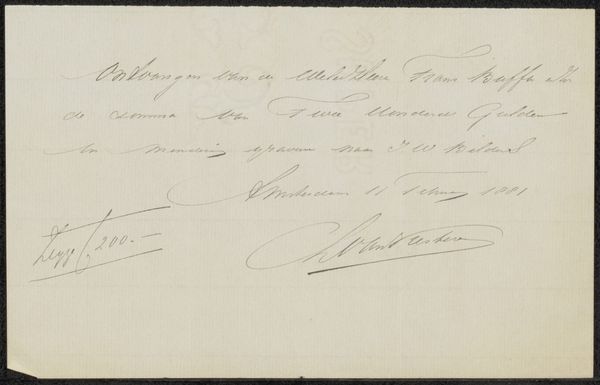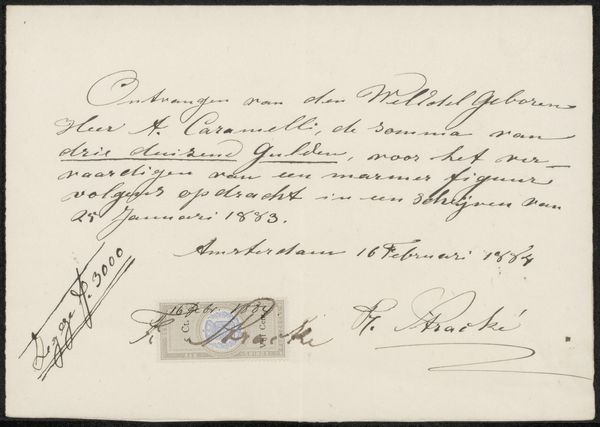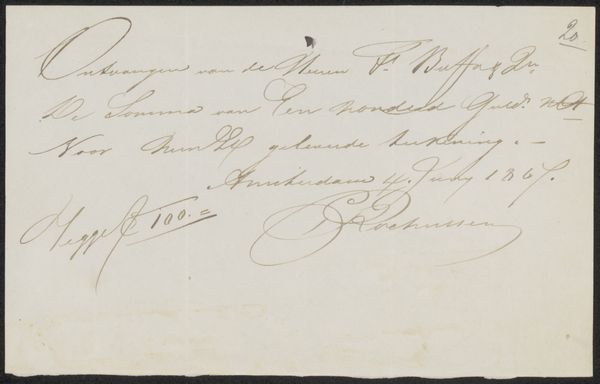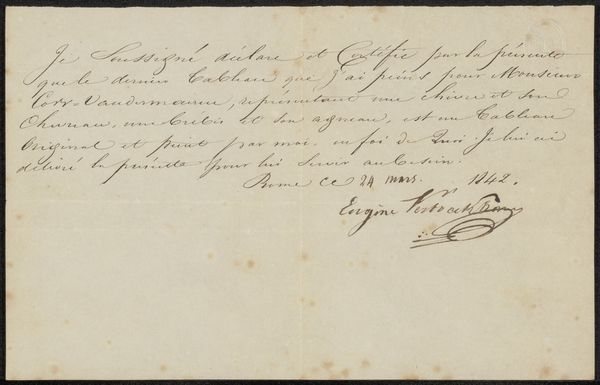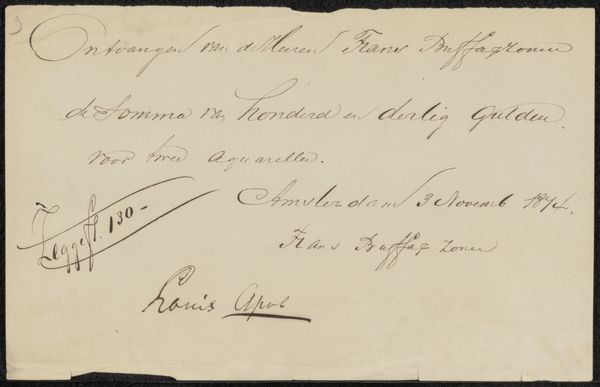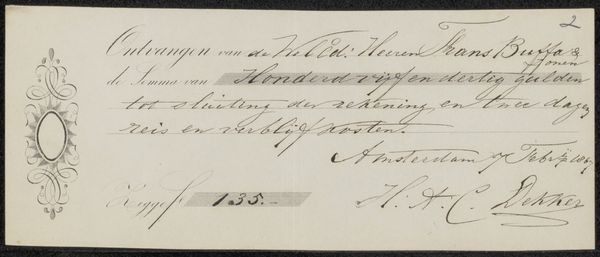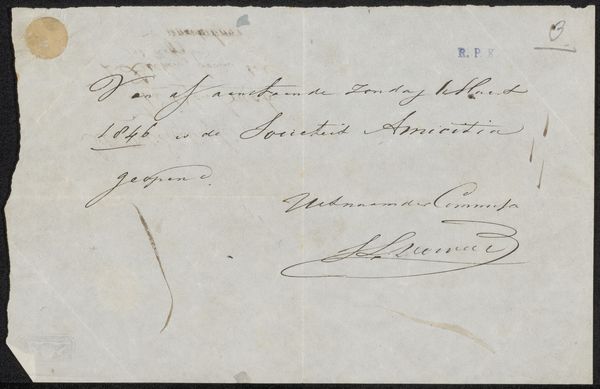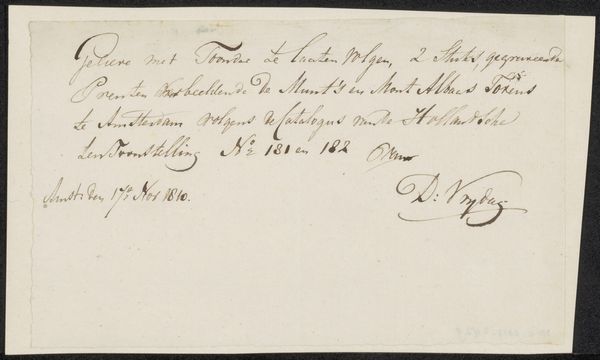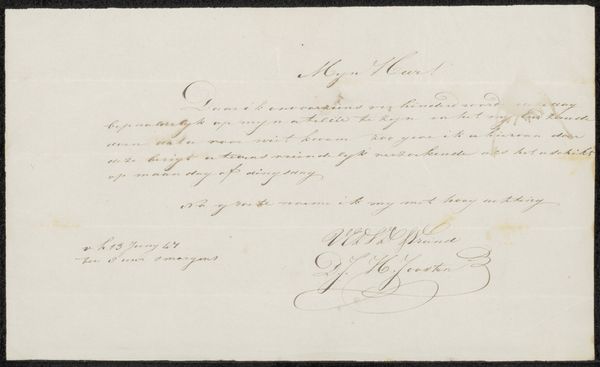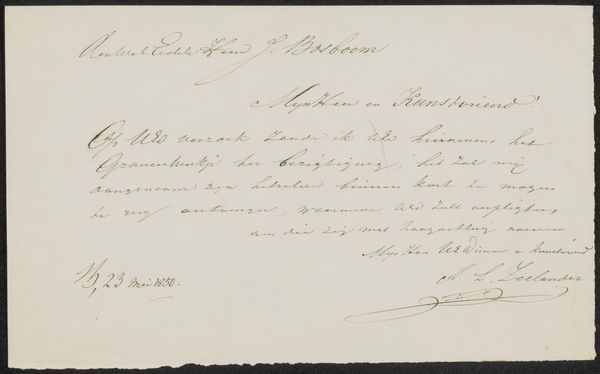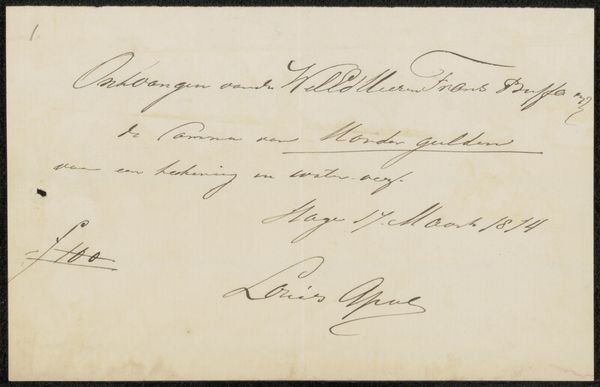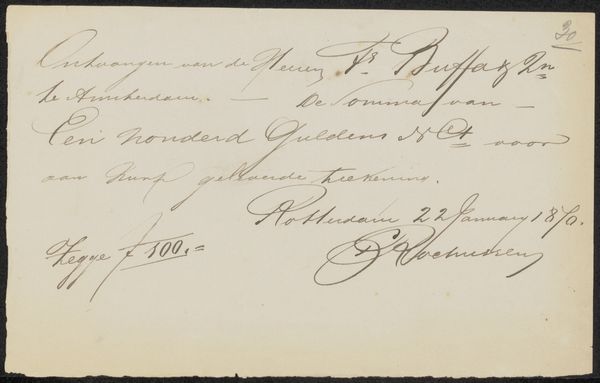
drawing, print, paper, ink
#
drawing
# print
#
paper
#
ink
Copyright: Rijks Museum: Open Domain
Curator: This is a receipt from the archive of Frans Buffa and Sons, titled "Kwitantie uit archief Frans Buffa en Zonen," possibly from 1868, here in the Rijksmuseum. It's an intriguing drawing or print on paper, rendered in ink. Editor: Hmm, my first impression is faded elegance. Like finding a forgotten note tucked in a book. The script, although somewhat illegible, is quite beautiful in its way. Almost like visual music… Curator: Indeed. It details payment received by Louis Chantal for two watercolors, referencing copies of works by Descamp and Marilhet. Looking at this, we see the commodification of art production through an intersectional lens; it reflects patronage, artistic networks, and the economy of art. The inscription mentions payment in currency—the Dutch guilder and possibly the French franc given its context. Editor: What gets me is this act of copying, that transaction almost feels like an early precursor to our digital age. To have a watercolour reduced to currency, and then passed around almost… like a file? It makes you question how artworks shift into something very different once commodified. Curator: Precisely. The artist's signature, “Louis Chantal," is clear evidence, highlighting agency within a specific economic context. Buffa and Sons were prominent art dealers, so receipts like these were the paper trail. They document transactions but also social histories. It allows insight into power dynamics, and potentially raises questions of fair labor. How well was Louis Chantal compensated? Editor: I love this idea that within a single piece of paper, an entirely social history might reside. It’s kind of like imagining a single brushstroke that reveals an entire portrait. I keep staring into the numbers. It really grounds what are now famous art historical practices into hard financial data! What was made possible at the intersection of this particular set of numbers. Curator: Exactly! It offers tangible proof about how artworks, artists and dealers operate within society. We learn about market prices, artists’ compensation, and maybe begin asking questions of value. Editor: It feels so intimate, so fragile. An ephemeral, fragile beauty against historical power structures. Curator: The document offers a brief but vital snapshot of art, artists, and capitalism at play. Editor: Art existing at the mercy and at the hand of…well, being human! I really see something raw and vulnerable there.
Comments
No comments
Be the first to comment and join the conversation on the ultimate creative platform.
